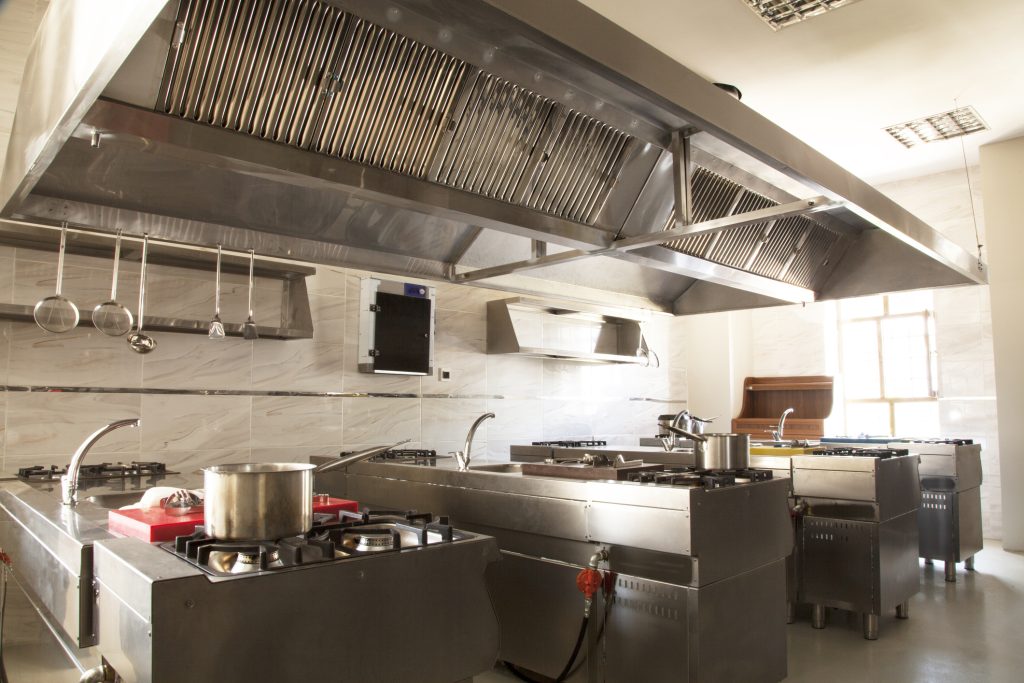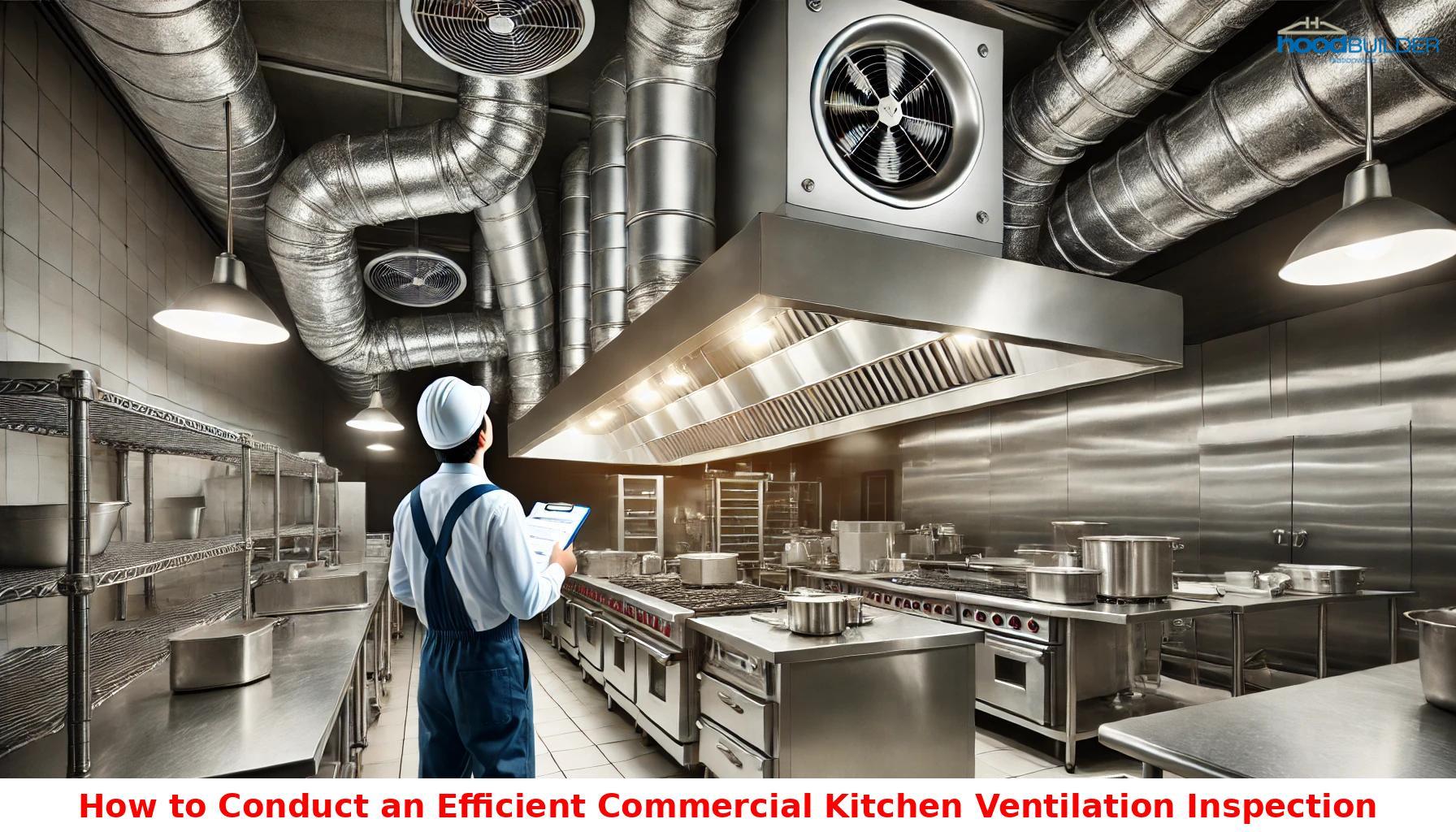Commercial kitchen ventilation inspection is vital to ensure the safety and efficiency of your kitchen operation. Proper ventilation affects the air quality, probable fire hazards, and also the buildup of grease and odors.
If you regularly inspect key components such as exhaust hoods, ductwork, filters, and fans you will be able to identify potential issues early on and address them before they cause costly problems.
This article casts light on the important role of your commercial kitchen ventilation inspection and provides tips on how to conduct a thorough inspection to keep your kitchen running smoothly.
Does your commercial kitchen need ventilation inspections in Denver, CO., and California? Call now.
The Importance of Regular Commercial Kitchen Ventilation Inspection
1. Rules and Regulations:
Health and safety regulations require kitchens to have proper ventilation systems. Regular inspections ensure that the system is functioning properly and meets these requirements.
2. Fire Safety:
Grease buildup in ventilation systems can be a big fire risk. Regular commercial kitchen ventilation inspection helps to identify and address any potential fire risks before they cause serious troubles.
3. Air Quality:
Good ventilation keeps the air in your kitchen fresh and clean. Regular inspections help to make sure your system is doing its job, removing cooking odors, smoke, and other pollutants from the air effectively.
4. Saving Energy:
Well-maintained ventilation systems work more efficiently; so, they can help you save money on energy bills.
5. Long-Lasting Equipment:
Regular commercial kitchen ventilation inspection lets you catch issues early on. Thus, you can prevent costly repairs or replacements later on. Besides, regular inspection will also help your system last longer.
6. Healthy and Comfortable Staff:
Proper ventilation keeps your kitchen crew safe and comfortable. Inspections ensure they are working in a safe environment.
Key Components to Inspect in Your Commercial Kitchen Ventilation System
Several components should be checked during a commercial kitchen ventilation inspection so as to ensure the functionality and compliance of the system. Here are some of the key components that are commonly inspected:
Exhaust Hoods:
Since the exhaust hood is a critical component of the ventilation system, inspectors will check it for its proper size, location, and condition. An exhaust hood is there to capture and remove grease, smoke, and other contaminants.
Grease Filters:
These grease filters help catch the grease before it goes into the ducts. So, the filters will be checked for cleanliness and proper ventilation.
Ductwork:
This is the piping that carries the air outside. Inspectors will check the ductwork for proper sizing, cleanliness, and insulation.
Exhaust Fans:
Exhaust fans help to draw air through the ventilation system and push it outside. They will check if they are working well and properly maintained.
Fire Suppression System:
Commercial kitchens must have fire suppression systems to prevent and control fires. Inspectors will check them for proper installation, operation, and maintenance.
Make-Up Air System:
This brings in fresh air to replace what is being sucked out. Inspectors will check the make-up air system for proper operation and balance.
Control Panels:
These panels are like the brains of the system; so, they are used to monitor and control the ventilation system. These brains will be checked for proper settings, safety features, and functionality.
Access Panels and Cleanout Points:
These need to be easy to get to for maintenance. Inspectors will make sure they are accessible.

Signs for Commercial Kitchen Ventilation Inspection
There are several signs that show your kitchen ventilation system may need inspection.
Firstly, if you are noticing a lot of smoke, steam, and grease hanging around in the kitchen, it could mean your ventilation system is not doing its job properly.
Secondly, lingering cooking odors that just won’t go away might be a sign that your ventilation system needs a check-up.
Thirdly, if you are seeing a ton of grease building up on surfaces, it could mean your ventilation system is not sucking it up as it should.
Fourthly, weird noises coming from your exhaust fans, or if they seem not to be providing enough airflow might be a sign of a problem with the fan or the overall ventilation system.
Fifthly, take a look around for any visible damage or wear and tear on your exhaust hoods, ductwork, or filters.
Sixthly, if there is a decrease in the overall performance of the ventilation system it is time for a closer look.
Lastly, if you are worried about safety issues like fire suppression system problems or strange smells that could be gas leaks, don’t wait. Get someone to check it out as soon as possible.
In a nutshell, keeping an eye out for these signs and getting regular inspections will help to keep your kitchen running smoothly and safely.
Team up with Hood Builder to ensure the safety and efficiency of your commercial kitchen.
Step-by-Step Guide to Conducting a Thorough Commercial Kitchen Ventilation Inspection
Make sure everything is cool and turned off before you start the inspection. Moreover, remember to wear personal protective equipment such as gloves, eye protection, and a mask.
Take a good look at exhaust hoods for any damage, grease buildup, or missing bits. Then, check the filters. They should be properly installed and not clogged with gunk. Besides, ensure that there are no gaps between the hood and the cooking equipment.
Check your exhaust fans for any unusual noises or signs of wear and tear. Make sure they are operating properly and moving air efficiently. If the fan blades are dirty or covered in grease, give them a clean.
Inspect the ductwork for any blockages, holes, or leaks. If there are any signs of grease buildup inside the ducts, clean them completely. Furthermore, check the ductwork for proper insulation to prevent heat loss.
Check out your fire suppression system to make sure it is ready to work properly. Test it out according to the manual and make sure everything is in place. Confirm that all the parts are properly installed and functional.
Check your make-up air system to ensure it is bringing in enough fresh air. Then, verify that the dampers, filters, and intake vents are clean and clear. Besides, to keep the air balance, you can adjust the settings if needed.
Once you are done with inspecting, give everything a good scrub from hoods and filters to fans and ductwork. Replace any damaged or worn-out parts like fans, blades, belts, or filters. Besides, try to schedule regular maintenance checks and cleanings.
Lastly, keep track of what you find during the inspection, any fixes you make, and maintenance tasks. Write down any ideas for upgrades or improvements. Follow up on any special issues or safety concerns identified during the inspection.
Common Issues to Look Out for During Commercial Kitchen Ventilation Inspection
Look for a buildup of grease on hoods, filters, fans, and ducts because this can reduce the efficiency of your ventilation system and also pose a fire hazard.
Dirty filters can not only reduce the ventilation system effectiveness but can also increase energy use. Thus, check those filters carefully for any clogs or blockages that may restrict airflow.
Listen for weird noises or vibrations coming from the fan. Wonky fans can cause poor air quality and insufficient smoke removal.
Leaky ducts affect the efficiency of your ventilation system and the air quality of the kitchen. Hence, make sure there aren’t any leaks or gaps in the ducts if you don’t want air escaping or contaminants getting in.
Double-check that your hoods are lined up right with your cooking equipment since misaligned hoods won’t capture smoke and grease as they should.
Test your fire suppression system regularly to ensure it will effectively do the job in case of a kitchen emergency.
Ensure that your make-up air system is bringing in enough fresh air to balance exhaust airflow. Remember! Insufficient make-up air leads to negative pressure and this will directly affect the performance of the ventilation system.
Regular maintenance is key to the efficiency and extended lifespan of your ventilation system. So, inspect for any signs of neglect like dirty parts or old equipment.
Hiring Professionals for Comprehensive Commercial Kitchen Ventilation Inspection and Maintenance
Having experts by your side is a smart move to ensure that your system is running safely and efficiently. Here are some key benefits:
1. Expertise and Experience:
Professionals are knowledgeable and experienced enough to completely inspect your ventilation system, find the issues, and offer the best solutions.
2. Compliance and Safety:
Certified experts are fully aware of regulations and safety standards. They can surely help you keep your kitchen safe and compliant.
3. Preventative Maintenance:
Experts, with the help of regular maintenance, can identify small issues before they turn into major problems. So, this will not only help you to prevent costly breakdowns but will also extend the lifespan of your ventilation system.
4. Efficiency and Performance:
Proper maintenance will let your ventilation system operate more efficiently and so save you more money on energy costs.
5. Peace of Mind:
Regular and professional inspection and maintenance of your ventilation system will give you peace of mind that your kitchen is safe, clean, and operating at its best.
Frequently Asked Questions on Commercial Kitchen Ventilation Inspection
1. How often should commercial kitchen ventilation be inspected?
The National Fire Protection Association (NFPA) recommends that kitchen exhaust systems be inspected at least every six months. However, high-volume kitchens may require more frequent inspections, such as quarterly.
2. Who performs commercial kitchen ventilation inspections?
Inspections should be conducted by certified professionals who specialize in commercial kitchen ventilation systems. They are trained to identify potential hazards and ensure compliance with local codes and regulations.
3. Can I clean my kitchen ventilation system myself?
While some basic maintenance tasks like changing filters can be done by staff, thorough cleaning and inspection should be performed by professionals who have the necessary tools and expertise to safely clean and assess the system.
4. How can I maintain my kitchen ventilation system between inspections?
Regularly clean filters, check for grease buildup, ensure that exhaust fans are functioning properly, and keep hoods free of obstructions. Implementing a routine maintenance schedule can help prolong the life of your system.
5. What costs are associated with commercial kitchen ventilation inspections?
Costs can vary based on the size of the kitchen, the complexity of the system, and local rates for inspection services. It’s advisable to get quotes from multiple providers to understand the range of potential costs.
Leave your commercial kitchen ventilation inspection to us from A to Z. Pick up the phone and call us at a 800-750-7055
Ensure the Safety and Efficiency of Your Ventilation System in Denver, CO., and California.
All in all, to have a safe, efficient, and compliant cooking environment, it is essential to carry out regular commercial kitchen ventilation inspection and maintenance.
These inspections reduce grease buildup and so prevent fire hazards. Moreover, they provide better air quality for both kitchen staff and customers.
As a business owner, adhere to inspection schedules and work with certified experts to minimize health risks, comply with local regulations, and also enhance the longevity and performance of your ventilation system.
Our team of professionals at Hood Builder has the necessary equipment, experience, and knowledge and is ready to prove to you the quality of our work exceeds our competitors.

